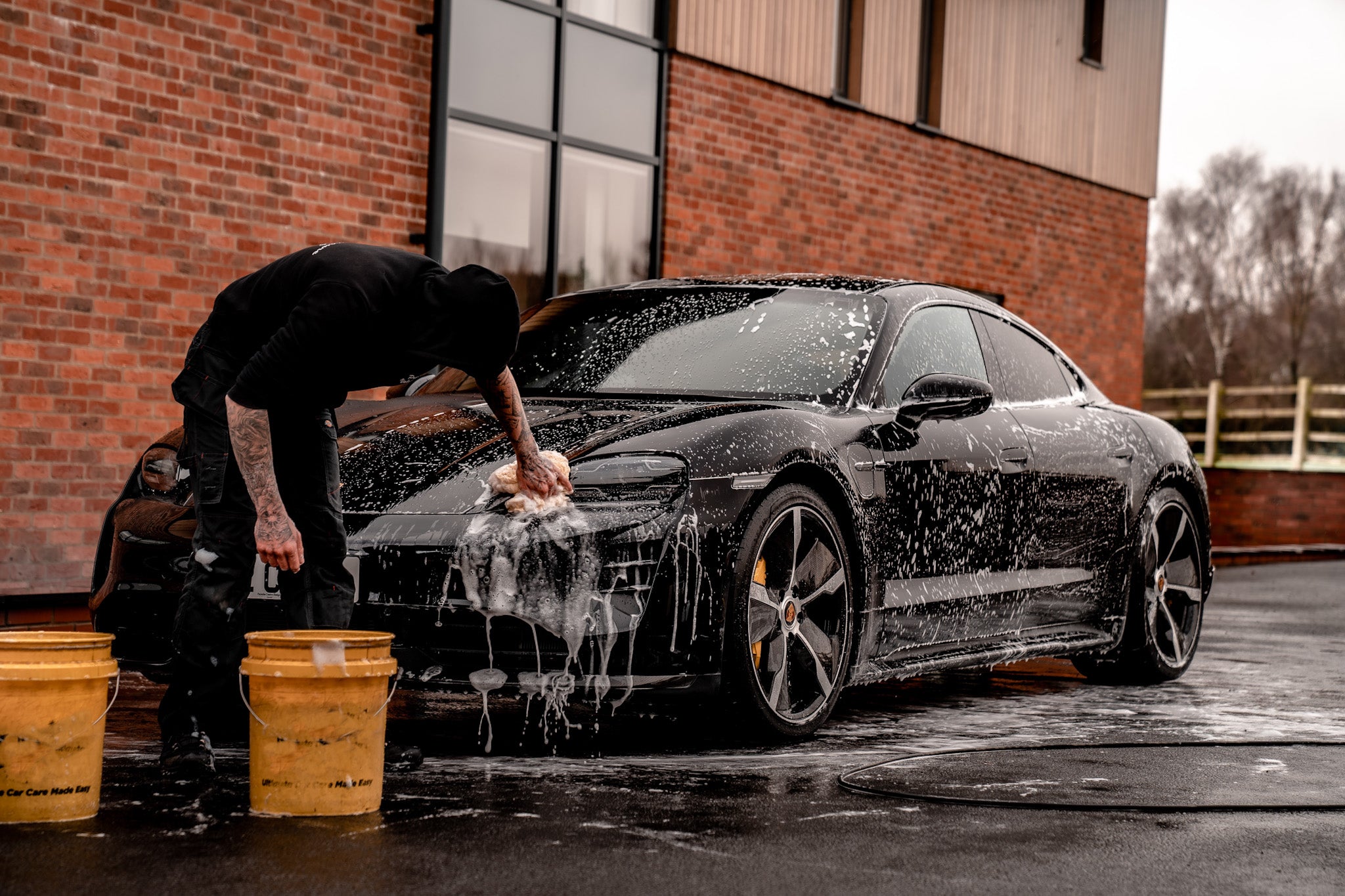Obtain the very best Ceramic Coatings San Jose for Optimum Paint Defense
Obtain the very best Ceramic Coatings San Jose for Optimum Paint Defense
Blog Article
Unveiling the Science Behind Ceramic Coatings: Exactly How Does It Work and Why Is It Superior to Typical Choices?
Ceramic layers have been acquiring appeal in different industries for their outstanding efficiency and sturdiness. The science behind these coverings exceeds plain surface protection, diving into the intricate chemistry that makes them stick out from typical alternatives (ceramic coatings san jose). Understanding just how ceramic layers work and why they surpass conventional options is essential for those seeking to boost the durability and resilience of their materials. So, exactly what sets ceramic finishes apart, and exactly how do they accomplish such amazing results?
The Chemistry of Ceramic Coatings
In recognizing ceramic finishes, diving right into the detailed chemistry behind their make-up is crucial for understanding their capability and longevity. Ceramic finishings are largely composed of silicon dioxide (SiO2), which forms a solid and safety layer when related to different surfaces. This chemical structure gives exceptional resistance to heat, chemicals, and corrosion, making ceramic finishings highly demanded for a large variety of applications.
The chemistry behind ceramic coatings includes the development of covalent bonds between silicon and oxygen atoms, creating an inflexible network that improves the layer's strength and sturdiness. Additionally, the visibility of other elements such as aluminum, titanium, and zirconium further improves the covering's properties, offering raised hardness and attachment to surfaces.
Recognizing the chemical structure of ceramic coatings enables for the customization of solutions to fit details demands, whether it be for vehicle, industrial, or household functions. By taking advantage of the power of chemistry, ceramic finishes remain to lead the way for premium defense and performance in numerous industries.
Benefits of Ceramic Coatings

As an outcome, ceramic finishes make cleaning and preserving surface areas a lot less complicated and less lengthy. In general, the multitude of advantages offered by ceramic layers make them an exceptional alternative contrasted to typical layer methods.
Just How Ceramic Coatings Bond
Ceramic finishes bond to surfaces with a procedure that entails molecular adhesion and chemical communications. When a ceramic finish is applied to a surface area, it forms a strong bond by chemically adhering to the surface at a molecular degree. This bond is created via the formation of covalent bonds, which are long lasting and extremely strong. The ceramic covering's molecules pass through the pores of the surface, developing a limited grip that stands up to splitting up.
Furthermore, the chemical communications between the ceramic coating and the surface area additionally improve the bond. ceramic coatings san jose. These communications enable the ceramic coating to create a seamless and constant layer externally, giving superb defense and durability. Unlike standard coatings that may sit on the surface area without completely bonding, ceramic layers produce an irreversible find bond that is immune to chemicals, UV rays, and severe ecological conditions

Essentially, the bonding device of ceramic coverings guarantees a effective and lasting protective layer that outshines traditional finishing options. This remarkable bond contributes to the sturdiness, scratch resistance, and longevity of ceramic finishes, making them a recommended choice for numerous applications.
Longevity of Ceramic Coatings
The phenomenal durability of ceramic coverings stems from their durable molecular bond and chemical interactions with surface areas, ensuring a long lasting safety layer that surpasses typical layer alternatives. As soon as used, ceramic coverings form a strong bond with the substrate, developing a resistant obstacle versus different environmental stressors such as UV radiation, chemicals, and abrasions. This bond is so safe that it can hold up against the roughness of everyday usage without weakening or breaking down important site swiftly.
Unlike typical layers that may weaken over time, ceramic layers maintain their stability for a prolonged duration, giving durable defense for the underlying surface area. On the whole, the exceptional resilience of ceramic finishings makes them a remarkable option for protecting a wide array of surfaces in different applications.
Ceramic Coatings Vs. Typical Options
In contrast to traditional finish approaches, ceramic coatings use a distinctive blend of resilience and protective capabilities that establish them apart in various surface area security applications. Standard alternatives such as wax or sealants give a short-term layer of protection that can disappear swiftly, needing frequent reapplication. On the various other hand, ceramic finishes develop a strong bond with the surface area, producing a semi-permanent or permanent barrier that is extremely immune to abrasion, chemicals, UV rays, and severe temperatures.
Moreover, ceramic finishings supply exceptional hydrophobic residential or commercial properties contrasted to conventional finishings. The hydrophobic nature of ceramic finishes triggers water to grain up and roll off the surface area, carrying dust and pollutants with it. This self-cleaning impact aids to keep the surface's cleanliness and gloss for extensive durations, reducing the need for regular upkeep.
Furthermore, ceramic coverings have a thicker layer compared to conventional options, giving enhanced scratch resistance and security versus small effects. This toughness guarantees resilient performance and helps preserve the visual charm of the dealt with surface for an extensive duration.
Conclusion
To conclude, the scientific research behind ceramic coatings lies in useful reference their chemical structure and bonding residential properties, making them above conventional alternatives. The benefits of ceramic coverings consist of raised resilience and protection for surfaces. By comprehending exactly how ceramic layers work and their advantages over typical options, one can make enlightened choices when taking into consideration layer alternatives for numerous applications.
Unlike typical coatings that might sit on the surface without fully bonding, ceramic finishes produce an irreversible bond that is resistant to chemicals, UV rays, and harsh environmental problems.
The phenomenal longevity of ceramic layers stems from their durable molecular adhesion and chemical interactions with surfaces, ensuring a resilient protective layer that surpasses standard finish alternatives.Unlike typical layers that may weaken over time, ceramic coatings maintain their integrity for a prolonged period, offering lasting defense for the underlying surface.In comparison to conventional covering methods, ceramic finishes use an unique blend of toughness and protective capacities that set them apart in different surface defense applications. By recognizing just how ceramic coatings job and their advantages over traditional choices, one can make informed decisions when taking into consideration covering choices for different applications.
Report this page